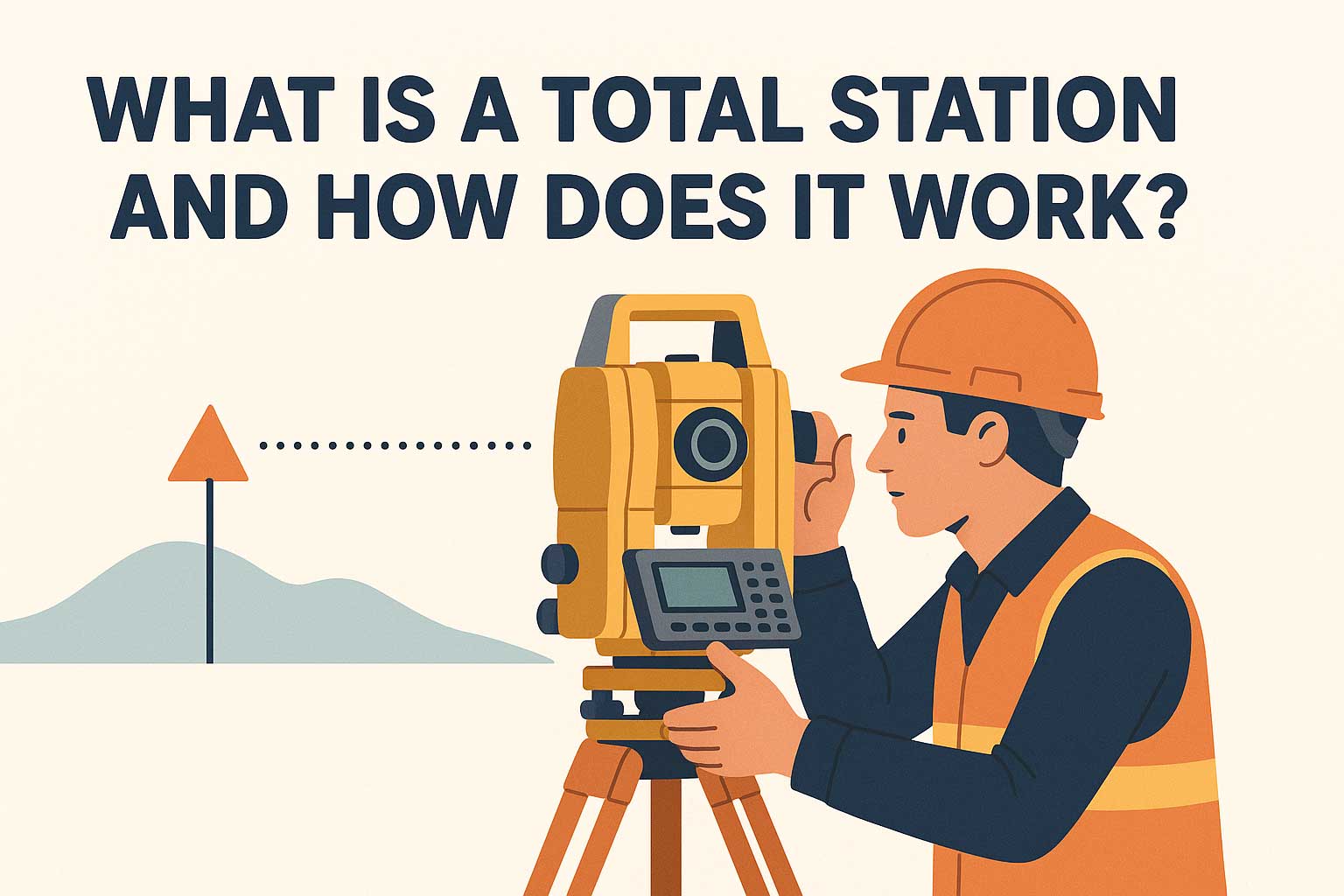If you’re new to the world of land surveying or construction, you may have heard the term Total Station, but what exactly is it? Whether you’re a student, a site manager, or starting your own surveying business, understanding what a total station does is the first step in making informed equipment choices. In this article, we’ll explain what a total station is, how it works, what it’s used for, and why it’s essential in modern surveying.
What Is a Total Station?
A Total Station is a modern surveying instrument that combines three tools into one device:
- Electronic Theodolite – Measures angles (horizontal and vertical).
- Electronic Distance Meter (EDM) – Measures distances.
- Microprocessor/Data Collector – Records and processes data.
Simply put: a total station helps surveyors determine precise positions, angles, and distances between points on the Earth’s surface.
How Does a Total Station Work?
Here’s how a typical total station survey is performed:
- Set Up: The instrument is mounted on a tripod over a known reference point. It must be precisely leveled and aligned.
- Targeting: A prism is placed on a pole at the point to be measured. The total station sends a laser or infrared signal to the prism, which reflects it back.
- Measurement: The total station calculates horizontal angle, vertical angle, and slope distance to the prism.
- Coordinate Calculation: The internal processor computes the X, Y, and Z coordinates of the point.
- Data Storage: Results are stored digitally and can be transferred to CAD or GIS software.
What Are Total Stations Used For?
Total stations are essential in many fields, including:
- Land Surveying – Boundary marking, topographic surveys, and mapping.
- Construction – Layout of buildings, roads, and infrastructure.
- Mining & Tunneling – Monitoring excavation, slope stability, etc.
- Archaeology – Documenting sites and artifact positions.
- Engineering Projects – Bridges, railways, pipelines, and more.
Types of Total Stations
There are several types of total stations:
1. Manual Total Station
You must manually aim and operate the device. It’s reliable and affordable but slower.
2. Robotic Total Station
Controlled remotely with automatic tracking. Ideal for single-operator fieldwork.
3. Motorized or Auto-Lock Total Station
Hybrid models with some automation features like prism tracking, but not fully robotic.
Benefits of Using a Total Station
- High accuracy (as precise as 1–2 mm)
- Digital data collection and transfer
- Faster fieldwork and fewer human errors
- Integration with GNSS/GPS systems
- Easy to store and export data
Common Questions
Q: Can I use a total station alone?
A: Yes, if you use a robotic total station, which enables single-person operation.
Q: Is it difficult to learn?
A: With some basic training, most users can become proficient within a few days.
Q: How much does a total station cost?
A: New models range from $3,000 to $20,000+. Used total stations can cost as little as $2,500.
Looking to Buy a Total Station?
If you’re looking for affordable used total stations from brands like Leica, Topcon, Trimble, or Sokkia, we can help!
👉 Browse our used equipment listings
📞 Contact us via WhatsApp for more info or stock updates.
Conclusion
A total station is an essential tool for modern surveyors, construction professionals, and engineers. It brings precision, speed, and digital efficiency to any site measurement task.
We hope this guide gave you a helpful overview of how total stations work and why they matter. Stay tuned for more product reviews, tutorials, and buying guides on our blog!

